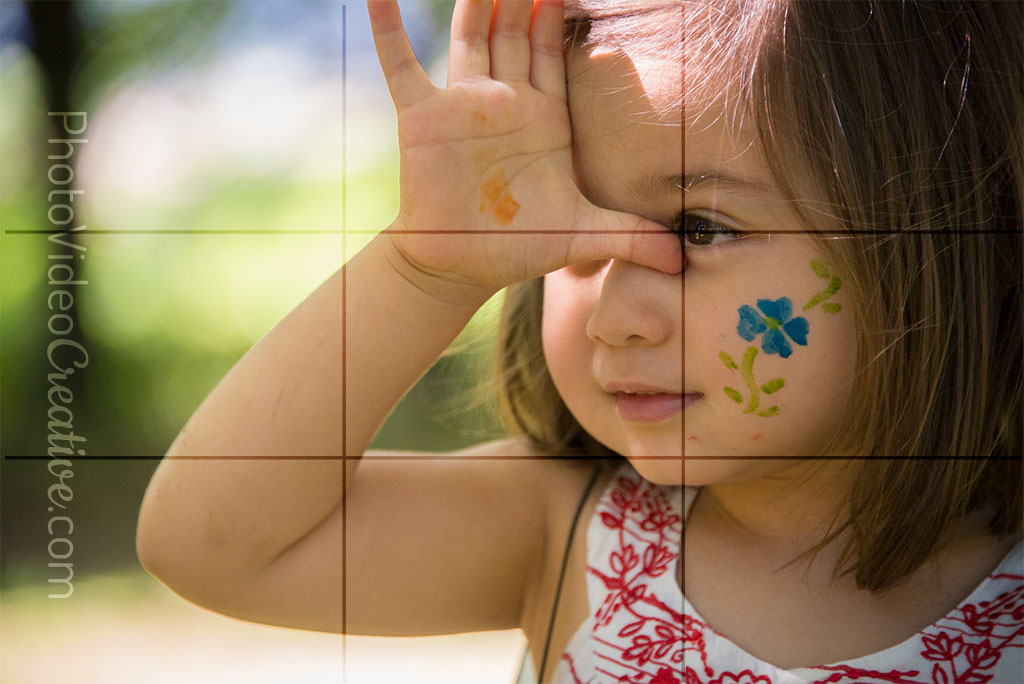
The reflex by far the most frequent among novice photographers is to put their subject in the very center of their photo. The direct consequence: you will not arouse any interest in your photo. There is a very simple technique to make your subject attractive: the rule of thirds. Why that ? The best answer comes from emotions!
I will share with you:
- Why we tend to center the subject of a photo
- What is the point of decentering a photo
- An introduction to the theory of emotions
- Emotions caused by a centered subject and an off-center subject
- What is the rule of thirds and how to use it well
Before We Begin
Succeeding in making remarkable photos means successfully capturing and sharing emotions in your photos. Focused on the theory of emotions, I designed a 6-step method for learning photography first with what you feel. Composition is the 3rd step to achieve, and mastering the rule of thirds is one of the essential composition techniques you should know in photography.
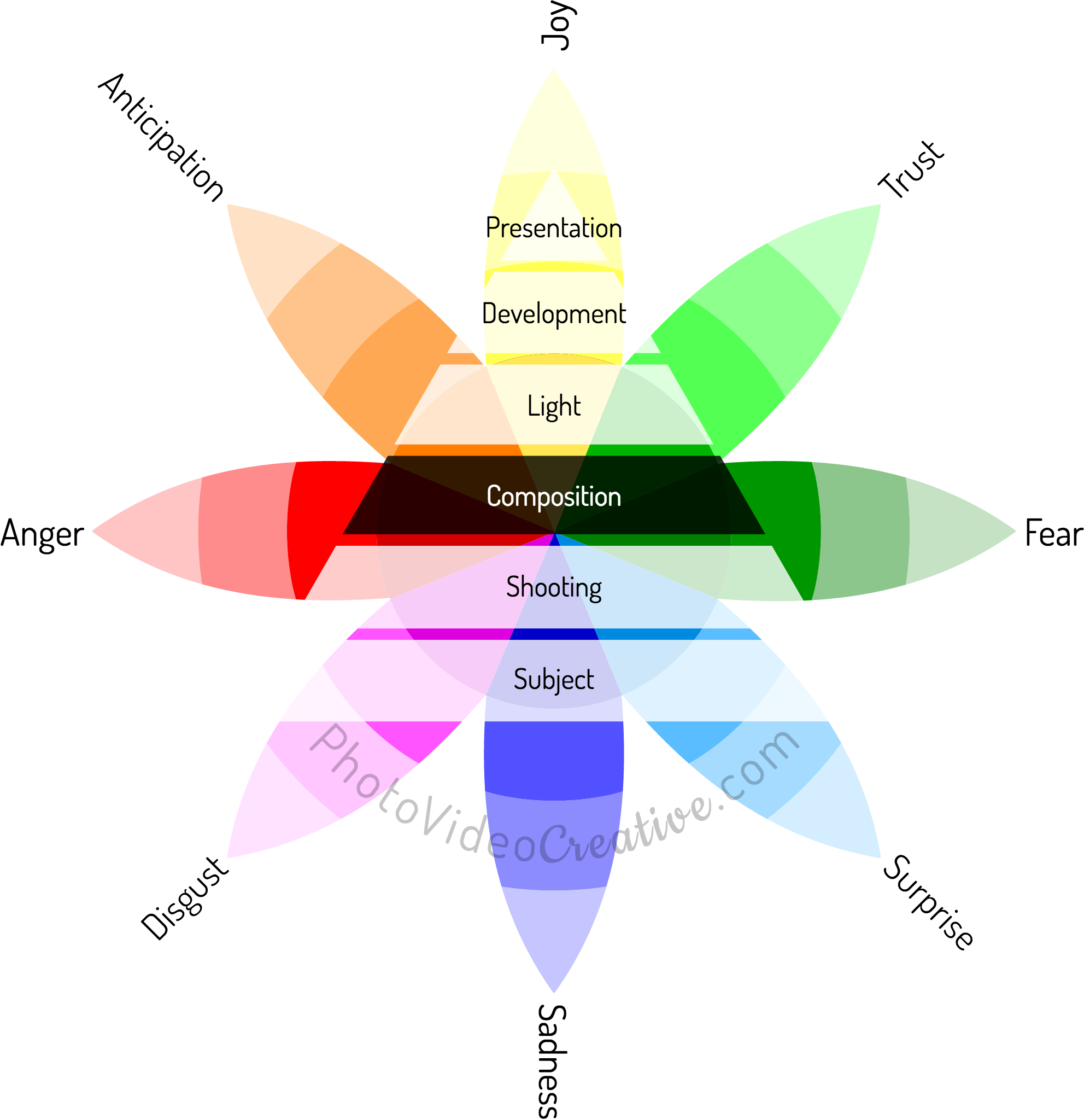
Why We Center (Too) Naturally the Subject of a Photo
Our eyes are great lenses capable of a very wide field of vision.
Yet our vision is more selective: even though we are able to perceive on the sides, at the bottom and at the top, we focus first on what is in front of us.
As soon as we perceive something unusual around our field of vision, our gaze is redirected over to put it back…in the center.
In photo, we have the same reflex. As soon as the subject is in the image frame, our instinct pushes us to place it in the center. Our brain makes us direct our camera, as it turns our eyes.
Your photo is then of an absolute normality.
Why Decentering Your Subject
What is the problem of centering your subject?
The problem is precisely that you do not create any problem for the eye! You capture in your photo what your eye would have done.
The eye that scans your photo … does not scan anything at all. The eye expects to find the subject in the center of the photo, and the subject is effectively placed in the center. The rest of the photo may immediately disinter the eye, as it looks as a mundane reality.
So how do you trap the eye and make it diving into your photo irresistibly?
The key is that your subject should be placed where instinctively the eye would not have gone. By decentering your subject, you’re disturbing the eye. It will then look for anchor points and discover your photo.
Attracting the eye where it does not expect it is exactly the purpose of the composition in photography.
And the simplest technique to create a well-composed decentralization is the rule of thirds!
Why use such techniques? By making the eye go into the picture and linger on your subject, you will make your emotions as a photographer even stronger.
A Quick Introduction to the Theory of Emotions
All types of emotions that we feel can be represented on a wheel with 8 primary emotions according to the theory of emotions of Plutchik. These primary emotions come in varying intensities (the most intense are at the center) and combine in 24 other emotions through dyads.
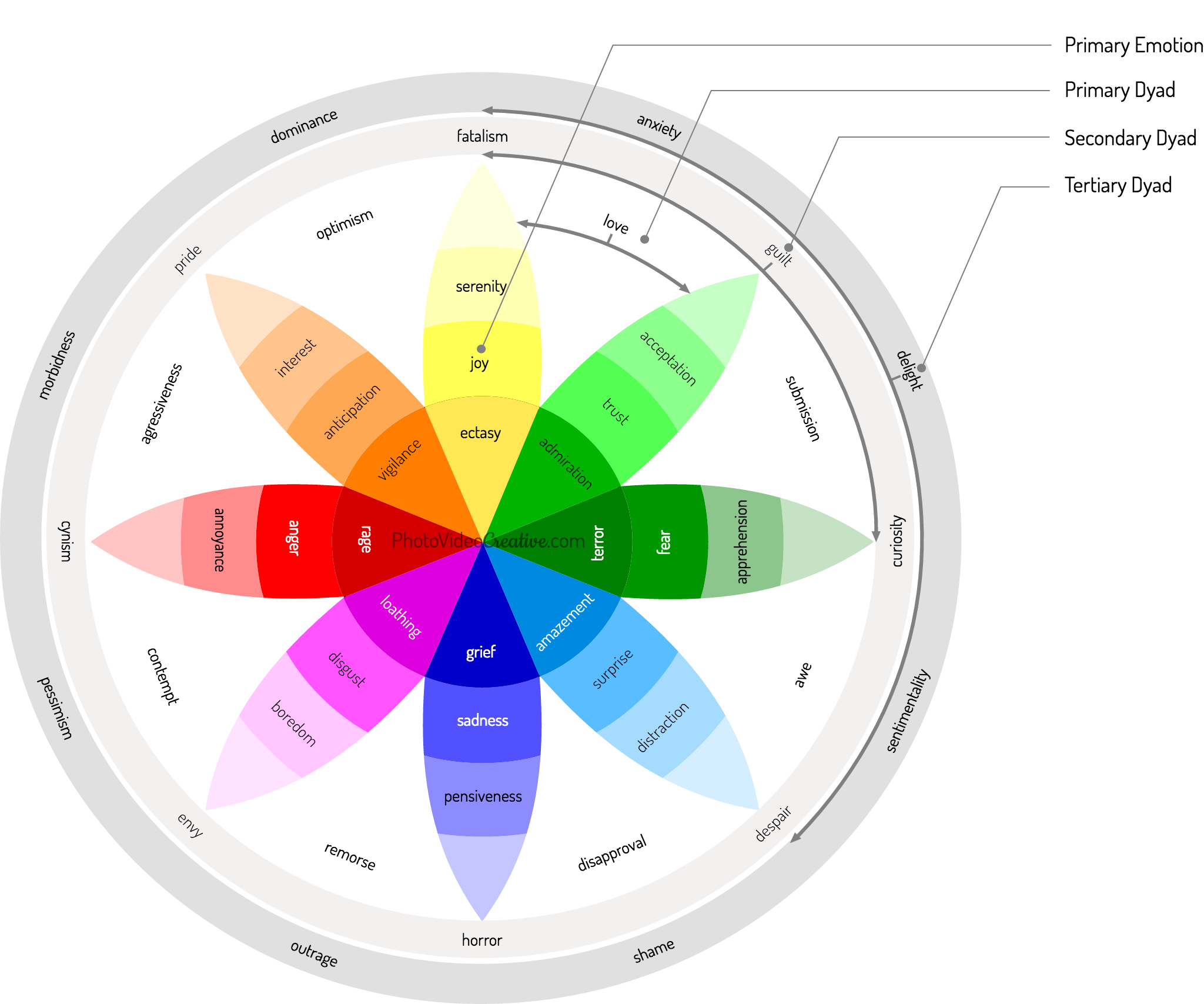
Emotions Related to a Centered or Off-center Subject
If you keep your subject centered in the frame, your photo will be seen as particularly ordinary.
You risk creating negative emotions:
On the other hand, by decentering harmoniously your subject with the rule of thirds, the emotions that you have captured and want to share will be put forward.
According to the theory of emotions, intensifying your emotions is to bring out the emotions of the center of the wheel:
- Ecstasy,
- Admiration,
- Terror,
- Amazement,
- Grief,
- Loathing,
- Rage or
- Vigilance
But be careful with too violent offsets of your subject. This can be counterproductive, your photo will be perceived as failed and will create very negative emotions:
How to Decenter Your Subject With the Rule of Thirds
Composing your photo with the rule of thirds is to use a 3-by-3 grid with cells of equal size:
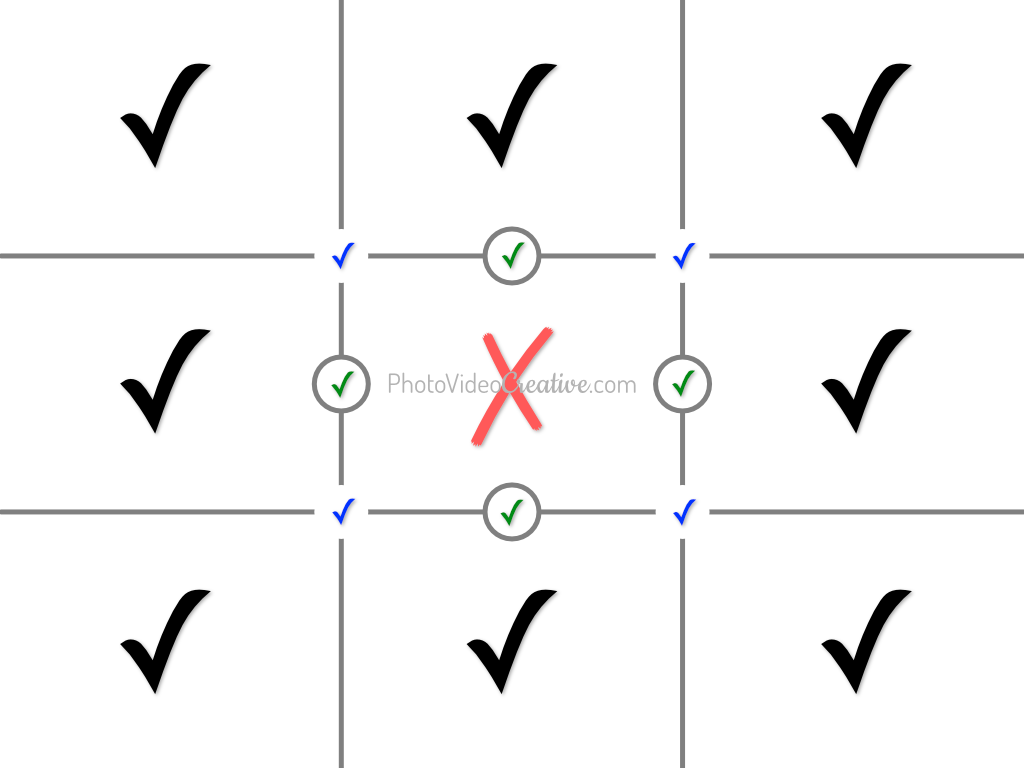
To decenter your subject, 3 ways are possible:
- A moderate decentering by centering your subject on the intersections of the grid: these are the crossings with the blue ticks
- A more obvious decentering by aligning your subject on one of the axes of the grid: these are the axes with the green ticks.
- A very pronounced decentering by placing your subject in an 8 eccentric zones: these are the areas with black ticks.
Of course, do not use the central area marked with a red cross.
1. Composing with the Intersections of the Rule of Thirds
Just place your subject on one of the four intersections of the grid (blue ticks). Your subject is then decentered enough to interest the eye without provoking potentially negative emotions.


2. Composing with the Axes of the Rule of Thirds
To use the axes of the rule of thirds, it is necessary to center the main characteristic of the subject on one of the axes:
- For a medium-shot portrait, it is the horizontal axis of the eyes
- For a full portrait, it is the vertical axis that passes through the body
- For a mountain, it is the vertical axis that passes through its summit
- Etc.
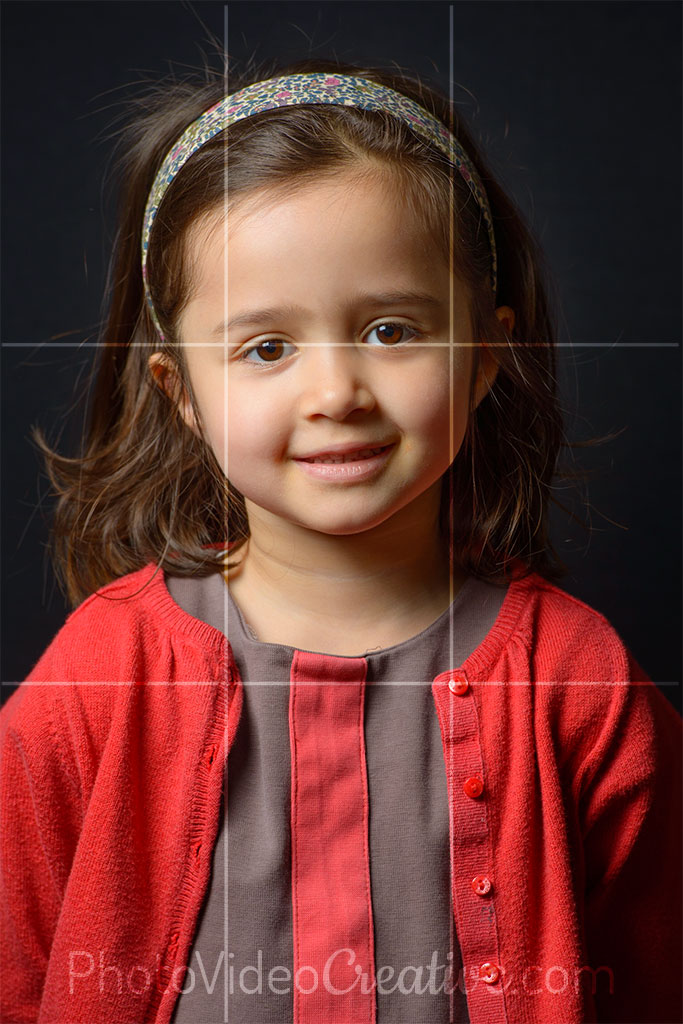
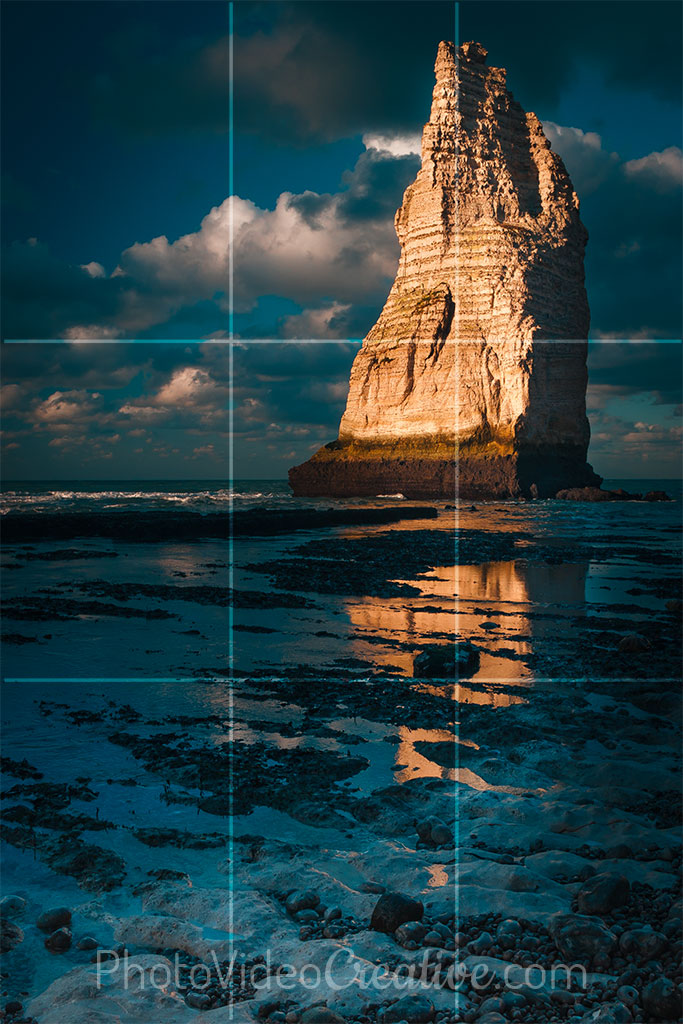
3. Composing with the Off-center Areas of the Rule of Thirds
Here, you will place your subject on one of 8 off-center areas of the grid (the black ticks).
The decentering is then more emphasized and potentially even more attractive to the eye.
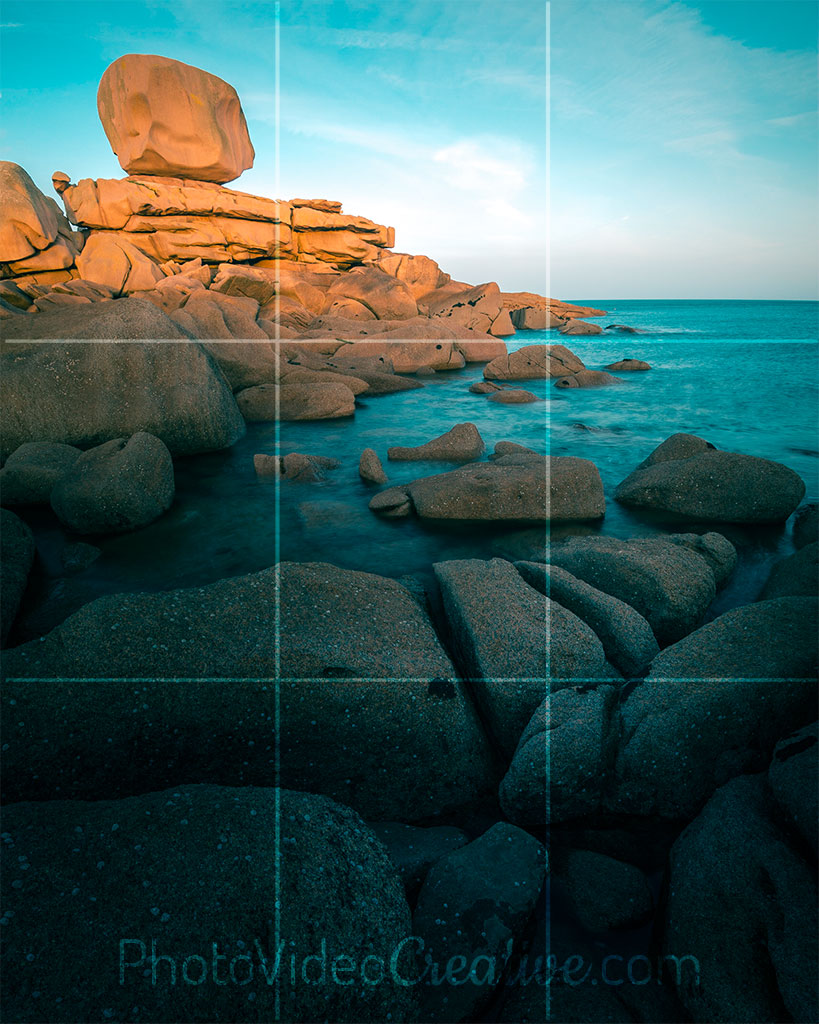
What Do You Think?
In your best photos, have you centered or off-center your subject? Do you think that using the rule of thirds would have made your photos more attractive?
Leave me your comment, I will answer with pleasure.
Let’s Go On Together!
Learn how to photograph with my 6-step method to make your photos first with your emotions. A powerful and intuitive approach that frees you from tools and techniques.
Then understand why composition in photography is essential in the expression of your emotions and explore these composition techniques:
1. Compositions with the frame:
- Off-center Subject: the Rule of Thirds (this post)
- Off-center Subject: the Golden Spiral (coming soon)
- Tight Framing, Wide Framing
- Portrait Orientation, Landscape Orientation
- Square, Academic and Panoramic Aspect Ratio
2. Compositions in space that play on the orientation, the depth and the volume of the subject:
- High Camera Angle, Low Camera Angle
- Exaggerated Perspective, Compressed Perspective (coming soon)
- Foreground, Midground and Background Stacking (coming soon)
3. Compositions with the content:
- Guideline and Line of Force (coming soon)
- Void and Negative Space (coming soon)
- Compositions with Contrast: Tone, Color, Shape and Patterns (coming soon)
You can also find practical composition tips with your smartphone.
Do not miss my future posts to better capture and share your emotions in picture: subscribe to my newsletter and get a free eBook!
Do you like what you’ve learned? Share this article with your loved ones!
I tried twice to download your free e-book on composition. But I’ve not received your reply or the download link. I’ve checked my Inbox and Spam folders, and I didn’t see your reply.